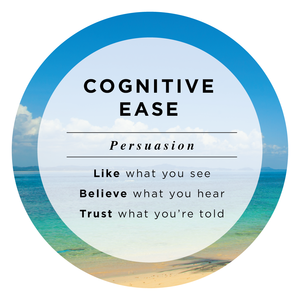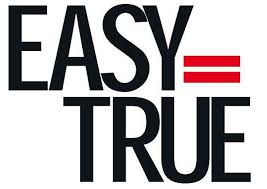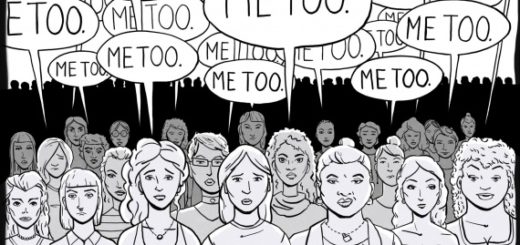Sexual Misconduct Series: Healing The Pants-Down Debacle Holistically – Part One
What Is Sexual Misconduct Really?

When it comes to sexual misconduct, it seems collectively we’ve reached the last-stop, last-straw, last-nerve, wafer-thin-mint mindset of “no more”. No more word-mincing or bush-beating or calling a spade a playing card when clearly we’re talking shovels. No more ignoring the proverbial elephant in the room. Which in this case has long loomed in the shadows of insinuation and innuendo and fifty shades of creep.
But to come right out and name a thing specifically, it must first be understood. What are we really talking about when we use the phrase “sexual misconduct”? If we go to Wikipedia, we can read the following: “Sexual misconduct includes sexual harassment, sexual assault, sexual abuse, and any conduct of a sexual nature that is without consent, or has the effect of threatening or intimidating the person against whom such conduct is directed”. From a Chinese medicine point of view, which tends to look at all aspects of an issue and hone in on an underlying root cause, we could say sexual misconduct arises from a fundamental disconnection in personal power. There can be many varied and nuanced expressions of misconduct but, if we boil them all down to brass tacks, being disconnected from one’s personal power is the reason behind all of it.
In this multi-part blog series, I will examine in-depth the Chinese medicine, New Thought and chakra perspectives on how sexual misconduct manifests and how, from a holistic stance, a variety of tips and tools may be used to balance and reintegrate the out-of-harmony energies underlying this misappropriation of personal power.
 Before delving into the organic philosophies, though, it should be helpful to peruse the legal parameters existing in the United States. Legally speaking, a number of categories are differentiated to describe a person misusing one’s power over another. Assault is a physical attack. Assault and battery is the crime of acting in a threatening manner to do immediate harm as well as physically attacking someone. Aggravated assault and battery occurs when one attempts or causes another person serious injury with a deadly weapon. Rape and sexual assault refer to unlawful, forced sexual intercourse or penetration of bodily cavities. Statutory rape occurs when the victim is under the age of legal consent. Sexual abuse, also known as molestation, is undesired sexual behavior perpetuated by one person upon another, with perpetrators using force, making threats or taking advantage of victims who do not give consent; if this abuse is of a short duration, it is defined as sexual assault. What constitutes consent, which is the agreement between participants to engage in sexual activity, varies legally from state to state, as do statutes of limitations (defined as the window of time a state has to charge a perpetrator).
Before delving into the organic philosophies, though, it should be helpful to peruse the legal parameters existing in the United States. Legally speaking, a number of categories are differentiated to describe a person misusing one’s power over another. Assault is a physical attack. Assault and battery is the crime of acting in a threatening manner to do immediate harm as well as physically attacking someone. Aggravated assault and battery occurs when one attempts or causes another person serious injury with a deadly weapon. Rape and sexual assault refer to unlawful, forced sexual intercourse or penetration of bodily cavities. Statutory rape occurs when the victim is under the age of legal consent. Sexual abuse, also known as molestation, is undesired sexual behavior perpetuated by one person upon another, with perpetrators using force, making threats or taking advantage of victims who do not give consent; if this abuse is of a short duration, it is defined as sexual assault. What constitutes consent, which is the agreement between participants to engage in sexual activity, varies legally from state to state, as do statutes of limitations (defined as the window of time a state has to charge a perpetrator).
Additional definitions exist if we hone in specifically on workplace misbehavior. Title VII of the Civil Rights Act makes it unlawful “to harass a person (an applicant or employee) because of that person’s sex. Harassment can include sexual harassment or unwelcome sexual advances, requests for sexual favors, and other verbal or physical harassment of a sexual nature”. Such harassment is further differentiated into two basic categories – quid pro quo and hostile environment. Quid pro quo sexual harassment is employment in return for sexual favors, while hostile environment sexual harassment encompasses intimidating, hostile or offensive behavior that interferes with an individual’s work performance.
Yet even with all this explaining, sexual misconduct can be mystifying. For so long it’s filled in the blanks between whisperings and “what the what’s”; its dubious nature can leave us questioning our experiences or second-guessing what we THINK just happened. Often with someone we THINK we know.
Why is that?
The way our brains are wired has a lot to do with it.
The Role Of The Amygdala, Hypothalamus and Hormones
 The amygdala is the part of the brain most responsible for allowing us to feel fear. Basically it’s the brain’s “panic button”, and so when its alarm is set off by a perceived threat such as sexual misconduct, it signals the hypothalamus. . . which in turn alerts the body’s master gland (the pituitary) and the adrenals. In essence, the sympathetic nervous system then responds in unison with a flood of hormones. The good thing about these hormones is they usually prepare the body for a fight-or-flight response, which increases heart rate and fuels muscles so the body will have a surge of energy and strength in order to be able to resist or run from the perceived threat. The not-so-good thing about these hormones is they tend to impair the prefrontal cortex – the part of the brain that governs rational thought – and so a person undergoing an assault often can’t think logically. This hormonally induced confusion may be exacerbated because, for some victims, the release of opiates and corticosteroid hormones may render them uncommunicative and unresponsive, such that those thus affected can neither fight nor flee – they simply shut down.
The amygdala is the part of the brain most responsible for allowing us to feel fear. Basically it’s the brain’s “panic button”, and so when its alarm is set off by a perceived threat such as sexual misconduct, it signals the hypothalamus. . . which in turn alerts the body’s master gland (the pituitary) and the adrenals. In essence, the sympathetic nervous system then responds in unison with a flood of hormones. The good thing about these hormones is they usually prepare the body for a fight-or-flight response, which increases heart rate and fuels muscles so the body will have a surge of energy and strength in order to be able to resist or run from the perceived threat. The not-so-good thing about these hormones is they tend to impair the prefrontal cortex – the part of the brain that governs rational thought – and so a person undergoing an assault often can’t think logically. This hormonally induced confusion may be exacerbated because, for some victims, the release of opiates and corticosteroid hormones may render them uncommunicative and unresponsive, such that those thus affected can neither fight nor flee – they simply shut down.
And so, since the brain reacts differently under duress depending upon a person’s individual hormonal response, it can never accurately be said that “if it were me I would have done ‘x’ ” or “if the person really didn’t want such and such to happen, he or she would have stopped it”. Understanding that each of us will respond in a way that’s unique to us during stressful occurrences like sexual assault may help to foster compassion and empathy for those who have endured such horrific experiences.
The Uneasy Concept Of Cognitive Ease
 As Daniel Kahneman states in “Thinking, Fast and Slow”, “Our comforting conviction that the world makes sense rests on a secure foundation: our almost unlimited ability to ignore our ignorance”. Kahneman’s words aptly reflect the idea of cognitive ease, which suggests we are more likely to believe what is familiar, easy and in line with what we already accept to be true. This hard-wiring of our brains evolved as a survival mechanism, because over time we have learned if we feel comfortable, we tend to experience safety. And so we look for those feelings that allow us to think we can let our proverbial guard down. When we feel we are right and we are certain about things, we perceive that all is well. Which makes us want to experience more and more of feeling right and confident. Yet when we are in those comfortable states of mind, we can be amazingly vulnerable to looking at the world through a lens colored by all of our biases – and perhaps not even be aware we are so influenced by these distortions.
As Daniel Kahneman states in “Thinking, Fast and Slow”, “Our comforting conviction that the world makes sense rests on a secure foundation: our almost unlimited ability to ignore our ignorance”. Kahneman’s words aptly reflect the idea of cognitive ease, which suggests we are more likely to believe what is familiar, easy and in line with what we already accept to be true. This hard-wiring of our brains evolved as a survival mechanism, because over time we have learned if we feel comfortable, we tend to experience safety. And so we look for those feelings that allow us to think we can let our proverbial guard down. When we feel we are right and we are certain about things, we perceive that all is well. Which makes us want to experience more and more of feeling right and confident. Yet when we are in those comfortable states of mind, we can be amazingly vulnerable to looking at the world through a lens colored by all of our biases – and perhaps not even be aware we are so influenced by these distortions.
One such distortion is the mere-exposure effect, which means repeating something often enough – even if that particular piece of information isn’t true – can be enough to cause people to believe in it simply because repetition breeds familiarity and feeds cognitive ease. Advertisers and hate groups have long known that if you say something loudly enough and often enough, you can persuade others to believe as you do.
But familiarity isn’t the only thing that aids and abets cognitive ease. It’s helpful to understand that inherently our bodies are lazy. And so if given a choice between a complex concept and an easy one, our brains are designed to take the easy way out. Which means if we are presented with two ideas – one that’s easy to comprehend and one that’s more complex – we tend to accept the easy idea simply because it takes less cognitive power to process it. This tendency to go with what’s easier makes us inclined to accept ideas that are more in alignment with what we already believe than to embrace foreign concepts or those requiring critical consideration. And this tendency is also what often gets us into trouble with discerning sexual misconduct.

According to RAINN (Rape, Abuse & Incest National Network), which is the nation’s largest organization addressing sexual violence, 7 out of 10 rapes are committed by someone the victim knows. Someone familiar. Someone the victim feels certain about and comfortable with. Someone the victim’s brain perceives with cognitive ease. And so if this perpetrator behaves inappropriately, the victim’s brain tends to resort to its already established belief that this person is safe. . . while its prefrontal cortex is being flooded with hormones that blunt its logical reasoning capabilities. All in all this scenario sets the stage for any acts of sexual misconduct to be excused, explained away or otherwise downplayed or disregarded. Because these acts mess with our cognitive ease. They take away our comfort and our certainty. Which makes it that much easier for us to want to look the other way. Especially when the silence that’s long shrouded sexual misconduct makes us wonder what’s appropriate behavior. . . and what isn’t.
 Where do wolf whistles and winking fit in? It’s easy enough to rationalize they’re harmless, especially when compared with terrorizing or touching or exhibitionist behavior. How about the guy who always tells dirty jokes in the office break room? Or verbal innuendo in general. . . how does it stack up
Where do wolf whistles and winking fit in? It’s easy enough to rationalize they’re harmless, especially when compared with terrorizing or touching or exhibitionist behavior. How about the guy who always tells dirty jokes in the office break room? Or verbal innuendo in general. . . how does it stack up  against so-called “grope-and-slobber stories”?
against so-called “grope-and-slobber stories”?
Oakland-based Lazear Mack is an employment law firm who admits the line between off-color and obviously out-of-bounds behavior is not always clear. On the firm’s website, they acknowledge how each person may have a different level of sensitivity as to what’s appropriate or not. Yet they advise that, in the workplace at least, “the legal standard goes beyond that which you might find offensive on one or two occasions. A hostile work environment in the sexual harassment arena is created by a boss or coworker whose actions, communication or behavior make doing your job impossible. It cannot be confined to merely overhearing two guys engaging in sexually charged banter in the break room.”
In essence, then, the legal recommendation is in line with the holistic one: observe, acknowledge and evaluate behavior as honestly as possible to see if a pattern emerges. Understand that far too many people will cross the line into the realm of sexually inappropriate behavior at one point or another. Realize that this line-crossing may be the result of a one-time, drink-fueled lack of judgment at a party or it may be indicative of something darker and deeper. . . something that plays out over and over again, no matter how much our sense of cognitive ease insists otherwise. And accept that each of us, as best as we can, needs to be as truthful as possible about communicating our personal boundaries and sensitivities when it comes to what feels appropriate or not.




































































































Hello Shari – and thank you for reaching out. I hope you’ve found this blog post to be helpful. Please let me know if you have any questions or would like to share anything with me.
helllo!